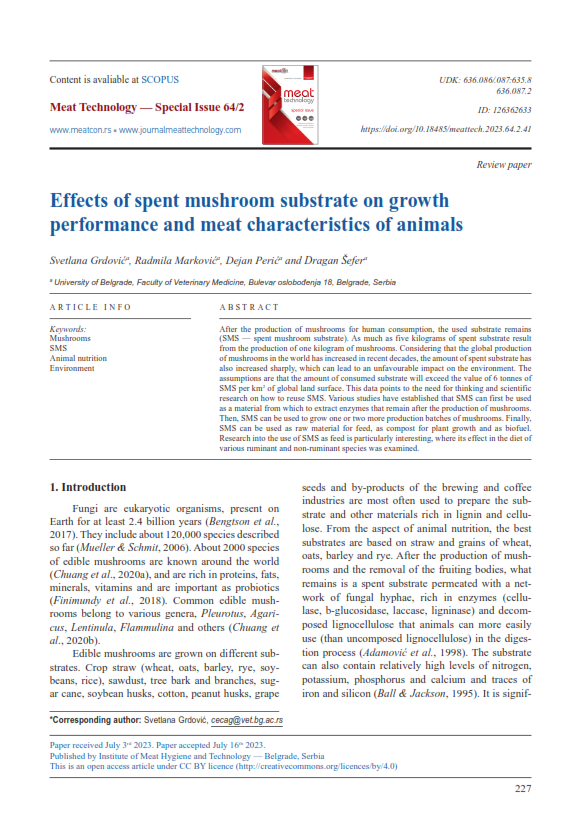Effects of spent mushroom substrate on growth performance and meat characteristics of animals
Abstract
After the production of mushrooms for human consumption, the used substrate remains (SMS - spent mushroom substrate). As much as five kilograms of spent substrate result from the production of one kilogram of mushrooms. Considering that the global production of mushrooms in the world has increased in recent decades, the amount of spent substrate has also increased sharply, which can lead to an unfavourable impact on the environment. The assumptions are that the amount of consumed substrate will exceed the value of 6 tonnes of SMS per km2 of global land surface. This data points to the need for thinking and scientific research on how to reuse SMS. Various studies have established that SMS can first be used as a material from which to extract enzymes that remain after the production of mushrooms. Then, SMS can be used to grow one or two more production batches of mushrooms. Finally, SMS can be used as raw material for feed, as compost for plant growth and as biofuel. Research into the use of SMS as feed is particularly interesting, where its effect in the diet of various ruminant and non-ruminant species was examined.





